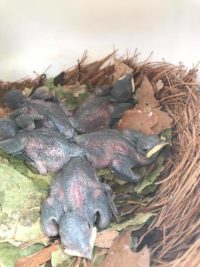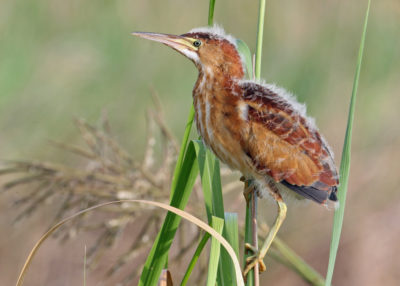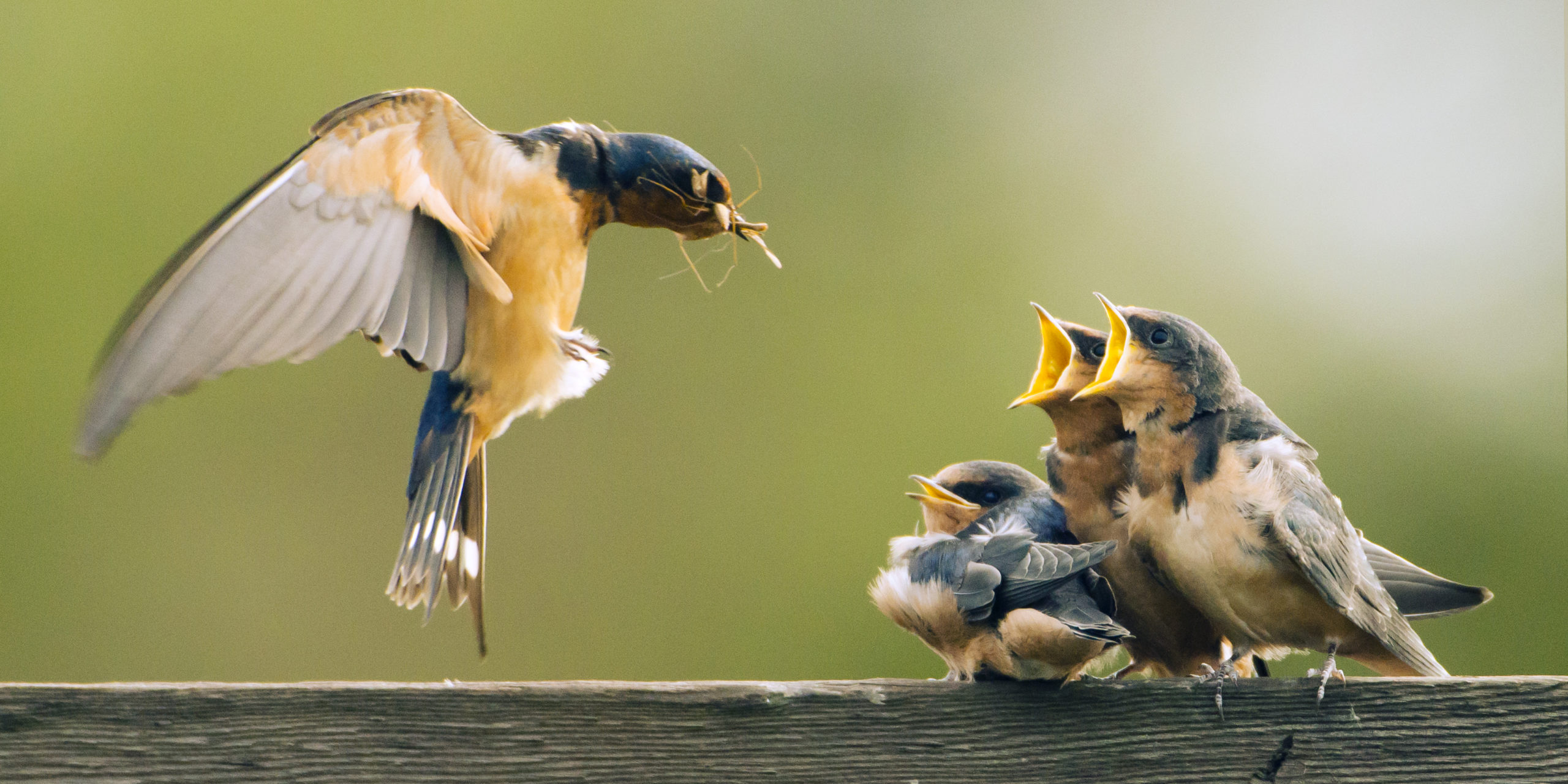The trees are budding, the insects are hatching, and the birds are vivacious — it’s finally spring! And it’s the time of year again when we, or people we know, often find baby animals unaccompanied by adults in our yards and neighborhoods.
People might reach out to you for advice on what to do in these situations, or they might have already taken action. While it’s natural for us to want to lend a nurturing hand when coming across a seemingly helpless animal, it’s vital to understand (and educate others) that most of the time, wildlife we come across are better off without our interference. In fact, our kind gestures are likely to do more harm than good, in part due to the unfortunate amount of misinformation regarding what to do for any given species that seems to be hurt, abandoned, etc.

Purple Martin Chicks © Penny Briscoe
Unless cared for by a licensed professional, misguided help will very often result in serious illness or death of the animal. Even in the rare case where a baby wild animal does need assistance from humans, the dietary and physiological conditions they require are very specific and complex. In addition, wild animals can become “imprinted” onto humans, resulting in unlikely survival when released back into the wild. This is one of the most unfortunate outcomes related to human interference; we can actually prevent the animal from functioning again in its natural habitat. This is why contemporary laws prohibit the care or possession of any wild animal by those who are not licensed; yet, many people still aren’t aware of these rules.
One common misconception of lone baby birds or mammals is that they have been abandoned or are orphaned, but this is rarely the case.
The best thing that you can do if you encounter an animal that you think needs help is to first call a licensed wildlife rehabilitator. They can advise you on the next steps. A list of licensed rehabilitators in Michigan can be found here.

Least Bittern Fledgling © Jim Guyton
If you are wondering what to do for a baby bird specifically, please refer to this verified flowchart for what actions to take.
- Each spring, baby birds leave the nest and have to learn to be adults. Their parents are fully equipped to take care of them.
- If the bird is featherless, try to return it to the nest and see if the parents are visiting the nest. If that’s not possible, try to put the bird in a nearby bush or tree limb, and continue to look for the parents. If evidence of parents cannot be found, put the bird in an enclosed container with air holes. Do not attempt to offer first aid, food, or water. Call a licensed wildlife rehabilitator as soon as possible.
- If the bird is fully feathered, it likely doesn’t need your help. It’s simply learning how to be in this world as an adult bird in progress!
Lastly, to help keep birds, their young, and other native wildlife safe each spring and to prevent predation, please pledge to keep your cats indoors and ensure that your dogs do not have access to nearby nests — some birds nest just a few feet off the ground while certain shorebirds like Piping Plovers nest directly on the beach.
We at Michigan Audubon encourage you to share this information and positively educate others about these guidelines and resources so as many people as possible are aware of the proper protocols for wildlife stewardship.
Thank you for caring!

